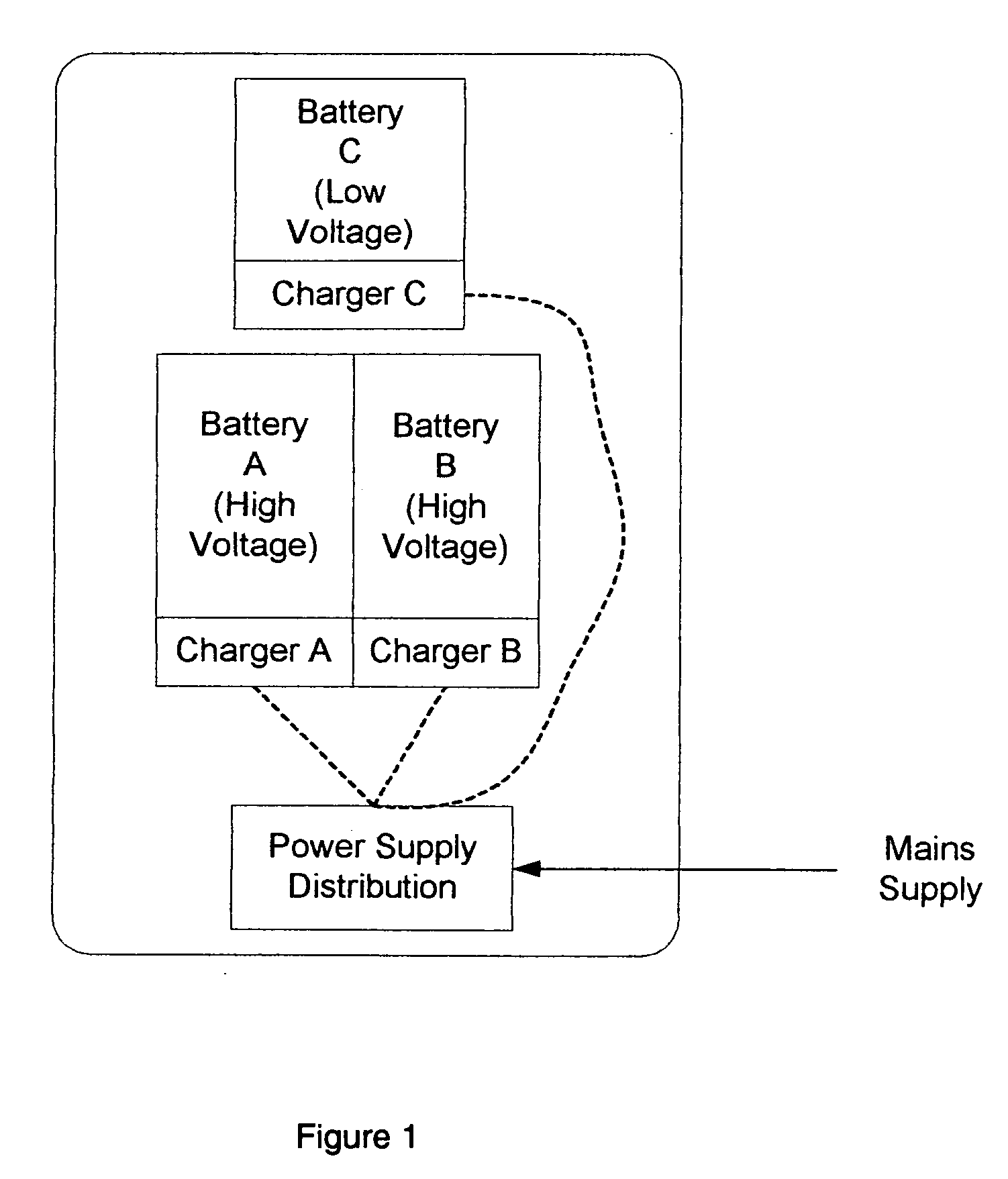Vehicle charging, monitoring and control systems for electric and hybrid electric vehicles
a technology of monitoring control system and electric motor vehicle, which is applied in the direction of hybrid vehicles, battery/fuel cell control arrangement, electric devices, etc., can solve the problems of premature battery failure and uncharged batteries, and achieve the effect of maximizing the acceleration availabl
- Summary
- Abstract
- Description
- Claims
- Application Information
AI Technical Summary
Benefits of technology
Problems solved by technology
Method used
Image
Examples
Embodiment Construction
[0031]FIG. 1 is an illustration showing an example of the distributed charging system of this invention. The illustration of FIG. 1 shows three battery packs A, B and C having different nominal voltages. Battery compartment A and battery compartment B are normally connected in series during vehicle operation in order to achieve a voltage double the rated voltage of each individual battery compartment. Battery compartment C is a low voltage battery pack, which is used to supply power to the vehicle auxiliaries.
[0032] Each battery compartment in FIG. 1 is a complete Stored Energy System (SES), complete with Battery Management System (BMS) and other control, measurement and communication blocks, such as a Thermal Management System (TMS) and battery charger. During the period when the vehicle is charged, each Stored Energy System (SES) charges its own batteries by using its own charger, which is controlled by its own BMS. Battery charger A, charges batteries in Stored Energy System (SE...
PUM
 Login to View More
Login to View More Abstract
Description
Claims
Application Information
 Login to View More
Login to View More - R&D
- Intellectual Property
- Life Sciences
- Materials
- Tech Scout
- Unparalleled Data Quality
- Higher Quality Content
- 60% Fewer Hallucinations
Browse by: Latest US Patents, China's latest patents, Technical Efficacy Thesaurus, Application Domain, Technology Topic, Popular Technical Reports.
© 2025 PatSnap. All rights reserved.Legal|Privacy policy|Modern Slavery Act Transparency Statement|Sitemap|About US| Contact US: help@patsnap.com



